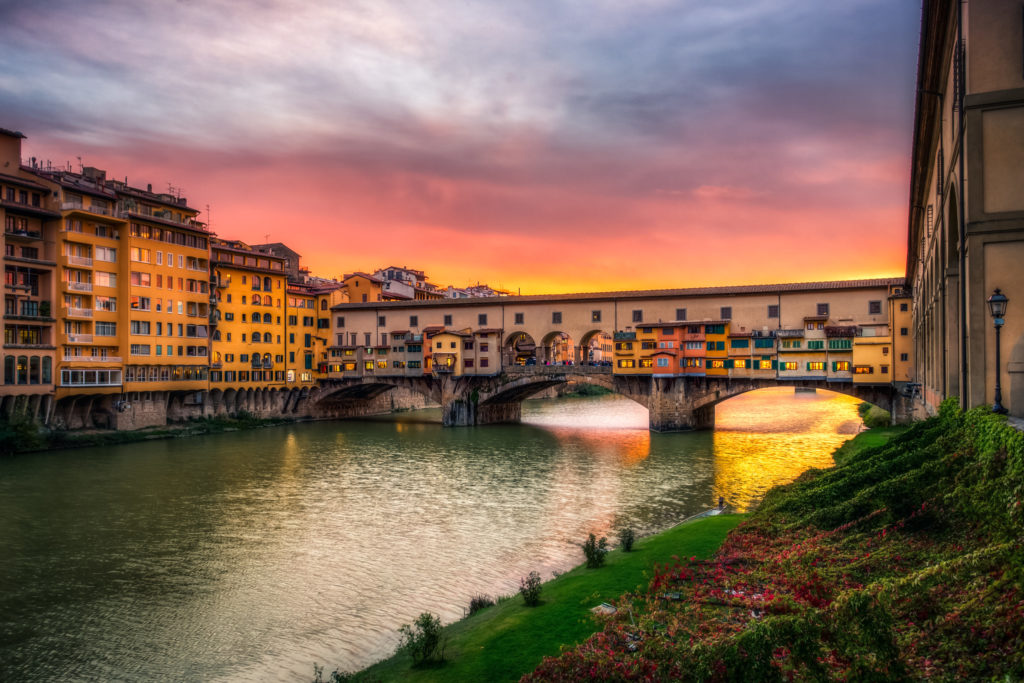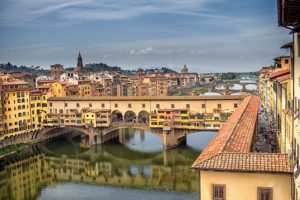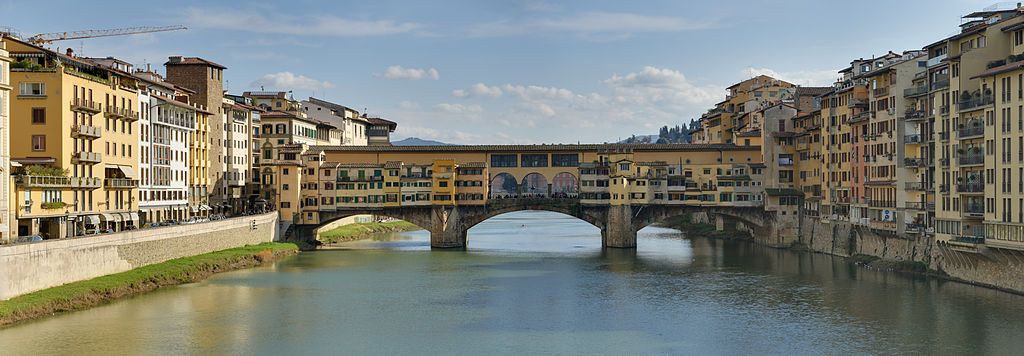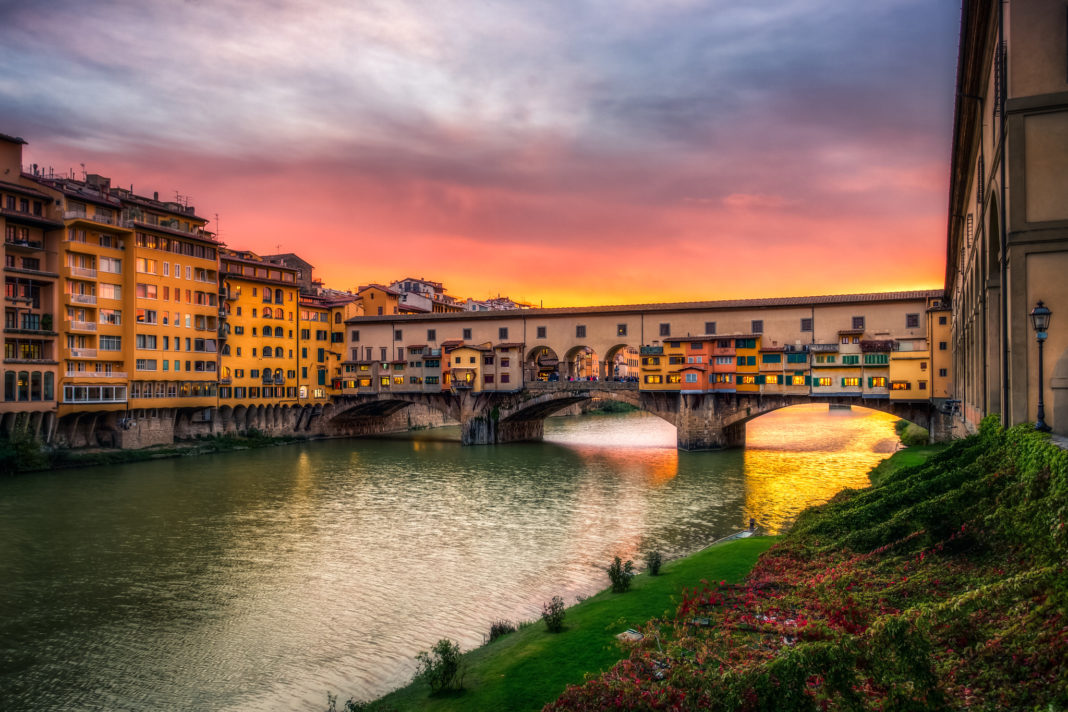The Ponte Vecchio is a medieval stone closed-spandrel segmental arch bridge over the Arno River, in Florence, Italy. The only bridge in Florence spared from destruction during the Second World War, it is noted for the shops built along it; building shops on such bridges was once a common practice. Butchers, tanners, and farmers initially occupied the shops; the present tenants are jewelers, art dealers, and souvenir sellers. The Ponte Vecchio’s two neighboring bridges are the Ponte Santa Trinita and the Ponte alle Grazie.

The bridge connects via Por Santa Maria (Lungarno degli Acciaiuoli and Lungarno degli Archibusieri) to via de ‘Guicciardini (Borgo San Jacopo and via de’ Bardi).
The name was given to what was the oldest Florentine bridge when the bridge to the Carraia was built, then called “Ponte Nuovo” in contrast to the pons Vetus. Beyond the historical value, the bridge over time has played a central role in the city road system, starting from when it connected the Roman Florentia with the Via Cassia Nuova commissioned by the emperor Hadrian in 123 AD.

In contemporary times, despite being closed to vehicular traffic, the bridge is crossed by a considerable pedestrian flow generated both by the notoriety of the place itself and by the fact that it connects places of high tourist interest on the two banks of the river: piazza del Duomo, piazza della Signoria on one side with the area of Palazzo Pitti and Santo Spirito in the Oltrarno.
In 1900, to honor and mark the fourth century of the birth of the great Florentine sculptor and master goldsmith Benvenuto Cellini, the leading goldsmiths of the bridge commissioned the Florentine sculptor, Raffaello Romanelli, to create a bronze bust of Cellini to stand atop a fountain in the middle of the Eastern side of the bridge, where it stands to this day.

During World War II, the Ponte Vecchio was not destroyed by the German army during their retreat at the advance of the British 8th Army on 4 August 1944, unlike all the other bridges in Florence. This was, according to many locals and tour guides, because of an express order by Hitler. Access to the Ponte Vecchio was, however, obstructed by the destruction of the buildings at both ends of the bridge, which have since been rebuilt using a combination of original and modern designs.

The bridge appears in the list drawn up in 1901 by the General Directorate of Antiquities and Fine Arts, as a monumental building to be considered national artistic heritage.
According to Wikipedia















